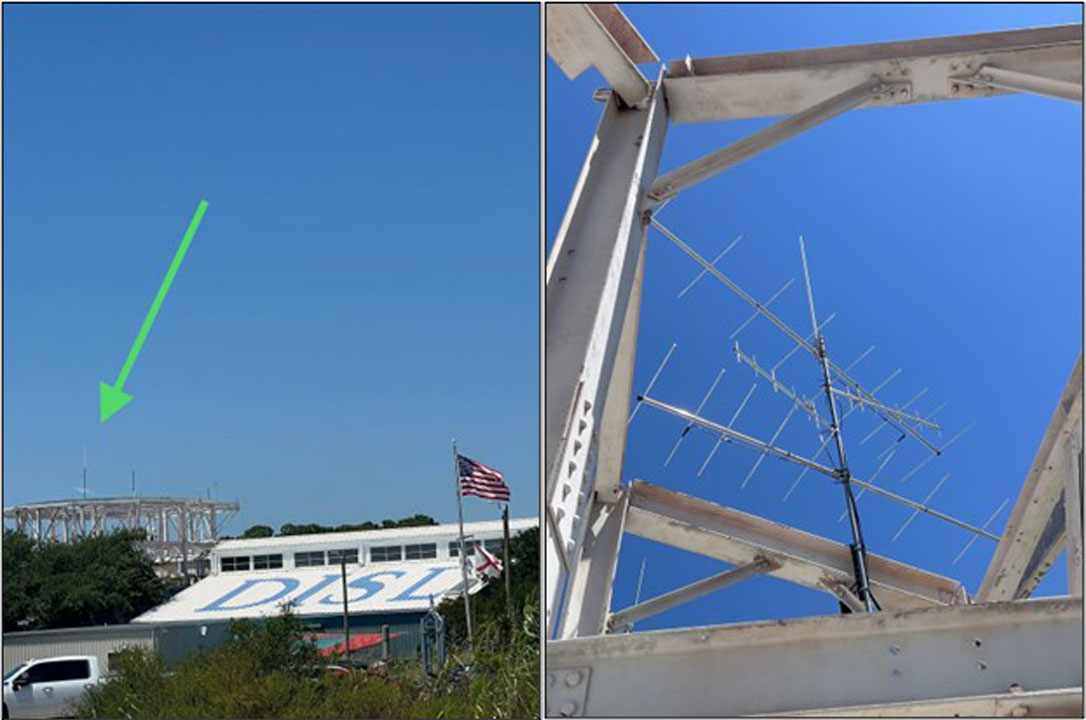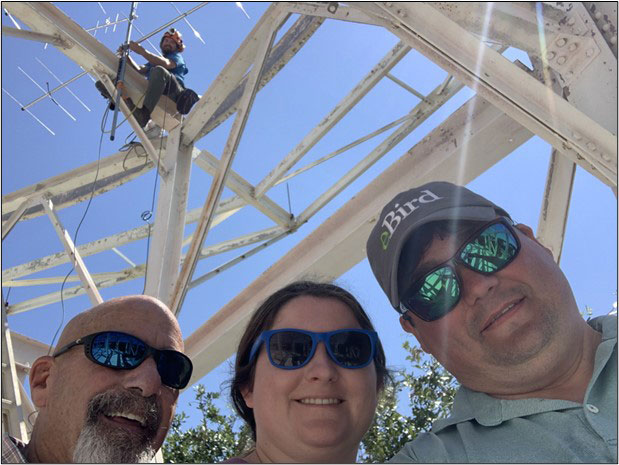
There is a new addition to the Dauphin Island skyline. Though it may be hard to notice, a Motus Wildlife Tracking Station is now perched on the radome on the Dauphin Island Sea Lab campus. It is the first Motus Station on the Alabama Gulf Coast.
This was made possible through a cooperative effort between the Banding Coalition of the Americas (BCA), Cornell Lab of Ornithology, and the Dauphin Island Sea Lab.
What is a Motus Wildlife Tracking System why is it a big deal?
Motus is a global wildlife tracking program created by Birds Canada. Using radio telemetry, thousands of individual animals can be tracked across vast expanses. Through the Motus program, anyone willing to deploy a Motus Station can contribute to the tracking of tagged species. The Dauphin Island Motus Station is the newest piece in the growing Motus network. In its simplest form, this station is a dot in an international game of connect the dots.
Besides contributing to the global understanding of migratory animals, the Dauphin Island Motus Station can help homegrown researchers right here in southern Alabama. For BCA, they will be able to better understand and track migratory bird movements in conjunction with their already on-going migratory bird studies in the state.
Coastal Alabama is the host for millions of migratory birds during migration to rest and refuel. Together with Cornell, the Motus Station will allow for more concerted efforts tracking specific migratory bird species to contribute to both on-going and future projects. Additionally, this will give researchers and students at the Dauphin Island Sea Lab a new method of tracking marine wildlife.

How it works?
Essentially, a Motus Station is a receiver of radio signals being broadcast by tags attached to animals. This could be anything: birds, bats, mammals, reptiles, and insects. Any animal fitted with a Motus tag that is in range of this station (about 15km or 9.3mi) will be recorded. All data collected is stored in the Motus system.
Each year, as part of their annual report, BCA will include a list of all species recorded. Although access to the data collected is limited to the public, this is done to allow the cooperating entities time to publish their findings and protect the integrity of the data. All in all, the Dauphin Island Motus Station is a giant leap forward in understanding the movements of animals in Coastal Alabama.
If you have any questions about this new addition or would like to sponsor a tower yourself, you can contact Kyle Shepard with BCA. If you would like to learn more about Motus you can do that at www.motus.org.